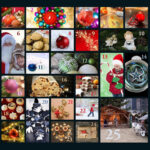It’s no secret that the hospitality industry is busiest during the holiday season. People travel more to visit family and friends during this time, leading to an overflow of events, restaurant reservations, hotel bookings, and other seasonal activities.
This demand affects those in customer-facing roles and puts a lot of pressure on hospitality marketers. Planning holiday content can be overwhelming, but a structured editorial calendar makes it manageable and effective.
As the holidays are prime time for customer engagement, a proactive approach ensures you deliver timely, relevant, and engaging holiday content on social media, your website, and other marketing platforms that resonate with your audience. A well-organized holiday editorial calendar aligns your marketing efforts with your business goals, simplifies task delegation, and ensures platform consistency.
Identify Key Holiday Dates and Events
To begin, it’s essential to pinpoint the holidays and events most relevant to your audience and business. For the hospitality industry, peak opportunities often center around Thanksgiving, Christmas, New Year’s, and Valentine’s Day celebrations. Don’t overlook regional events, international holidays, or industry-specific observances that could attract a broader audience. Including diverse cultural celebrations can help your business connect with international travelers and expand its reach.
By mapping out these dates, you can strategically plan your content to coincide with your customers’ holiday activities, travel patterns, and preferences. That way, your content will resonate with them emotionally and hopefully create a connection with your business that lasts well beyond the holidays.
Define Content Themes and Objectives
Once you’ve identified key dates, brainstorm content themes that align with the spirit of the season. For example, focus on togetherness, gratitude, and indulgence for Thanksgiving, or highlight relaxation and renewal for the New Year. These emotional touchpoints create meaningful connections with your audience.
Content themes should also support your business goals, such as promoting bookings, showcasing seasonal offers, or driving customer engagement. Explore content strategies that effectively align with holiday marketing objectives, such as holiday gift guides, product demos, or a holiday-themed blog series. Incorporating giveaways can be particularly impactful. For example, a winter giveaway could include branded items or travel discounts that foster goodwill and customer loyalty.
Create a storm of content in myriad forms to engage with your audience. In addition to the ideas above, consider social media stories sharing behind-the-scenes prep for the festive season and email campaigns highlighting your seasonal offers, special events, or festive recipes. Fill your editorial calendar with content themes and objectives that resonate with holiday emotions, celebrations, and travel activities.
Develop a Posting Schedule and Assign Responsibilities
Once you determine the content you want to share with your audience, it’s time to decide when you’ll post it and who’s in charge of creating it and ensuring it goes out.
Creating a clear posting schedule ensures your content rollout is timely and stress-free. Start by drafting an editorial calendar with deadlines for each piece of content, from concept to publication. Visual workflow tools like content marketing workflows can help you map out your process and assign specific tasks to team members.
Involve key stakeholders in the planning process, such as designers, writers, and social media managers. Clearly define content creation, approval, and scheduling roles to avoid last-minute confusion. Tools like Trello, Asana, or Google Calendar can help you track progress and maintain organization. By dividing responsibilities effectively and crafting a clear posting schedule, you ensure everyone stays on track and your holiday campaigns run smoothly.
Optimize for Engagement and Performance
One of the top goals for your holiday content is to reach as many people as possible in your target audience and prompt them to take action, whether purchasing something from your holiday collection or signing up for your email list.
There are a few things you can do to optimize holiday marketing content for engagement, starting with search engine optimization (SEO). Incorporate relevant SEO keywords and trending hashtags into your content to ensure they appear in search results and social media feeds. Research what your audience is typing into search bars when looking for holiday-related content, and include those words and phrases in your pieces.
Using high-quality visuals, creating compelling headlines, including video content, using interactive content, and posting consistently can also encourage engagement and boost the performance of your holiday content.
Finally, stay constantly vigilant about tracking your content’s success or lack thereof. Doing so will give you insight into what’s working and what isn’t, allowing you to pivot your content quickly to make it more successful. So, track performance metrics, such as click-through rates, social shares, and customer inquiries, to measure the success of your campaigns.
Conclusion
A thoughtfully planned holiday editorial calendar is an invaluable tool for hospitality marketers. It ensures that your content is timely and engaging, keeping your team organized and focused on achieving your business objectives.
You can make the most of the holiday season by planning early, identifying key dates, defining clear themes, and optimizing for performance. With the right strategy, you’ll delight your audience, boost engagement, and stay ahead of your competitors.
Start crafting your holiday editorial calendar today, and set your business up for a successful and festive season!





